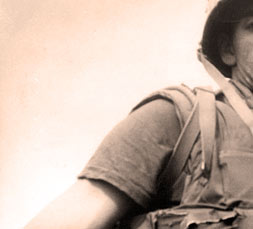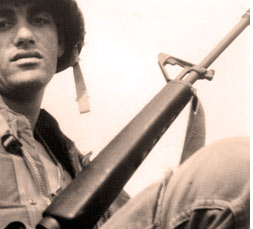|
 |
 |
 |
|||
|
Winter Solider Review
The Village Voice, January 27, 1972 It seems unlikely that a film consisting of nought but tightshots of ex-soldiers detailing their wartime experiences would have the power to rivet your gaze to the screen and glue you to your seat for a full 90 minutes. But "Winter Soldier" does, right from that opening moment when the camera locks in a former marine pilot Rusty Sachs describing the competition between soldiers in his helicopter to see who could toss live Vietnamese hostages the furthest distance through the air. When the film was screened last week at the Whitney, the audience seemed alternately tense and numb, but never restless or bored. "Winter Soldier" is, of course, the documentary account of the Winter Soldier Investigations, that three-day coming together in Detroit last February during which 200 Vietnam veterans unsparingly detailed the war crimes and atrocities they had witnessed or participated in. It was made by Winterfilm, a 16-member collective of New York movie professionals and technicians and will run at the Whitney January 27 through February 2 as part of the Young American Filmmakers series. After that it's on its own - Winterfilm hopes the museum showings will attract enough attention to ensure its move [to] national distribution. "The whole thing began last December when a group of filmmakers in contact with Vietnam Veterans Against the War heard about the investigation and decided it should be filmed." Winterfilmer Michael Wile told me. "We figured the media would ignore it, and they did. Swarms of reporters showed up but there was little real coverage. I personally saw story after story killed. Feeds went out over the wire, but nothing was ever printed. The vets demonstration in Washington that spring got lots of attention, but I guess the official press figured the hearings were just too heavy for the public to take." Money problems plagued the venture throughout. Winterfilm had to constantly stop in the middle of editing to hold fundraising screenings of rough cuts so they could get up the cash to go on. But the visual quality has nothing in common with the typical low-budget cheapie anti-war flick; the editing is flawless and smooth and the camera work always steady throughout the black and while 16 mm film. What exactly makes the picture so engrossing, especially now, a year later, when the grisly testimony has long since filtered down and been absorbed, its horror dulled by familiarity? It has something to do with the fact that each individual soldier comes across on celluloid as a fascinating, articulate, really vital personality. Perhaps the strongest of many strong segments comes during what could have been a cliched confrontation between a staid-looking white testifier and a tough-ass black rapper explaining why so few blacks showed up, and how racism was really the problem, not the war. He delivers his long monologue in the baddest of Detroit street jive, complete with long runs of rhyming couplets. It's more real than theater, but at the same time more theatrical, and no one in the audience wanted him to stop. |
MORE REVIEWS
Atrocities and artless innocence
Sometimes the small incidents are the most gripping film
You will remember it for the rest of your life |
||||
|
|||||